When it comes to transporting our feline friends, the choice between small or large carriers is a crucial one. As a cat owner, you want to ensure your kitty feels safe and comfortable during travel, whether it's a short trip to the vet or a longer journey.
This comprehensive guide will delve into the preferences of cats when it comes to their carriers, the pros and cons of different types, and how to choose the right one for your pet.
Key Takeaways:
- Cats have individual preferences, but generally, they feel more secure in a carrier that's cozy and not overly spacious.
- Soft carriers and hard carriers each have their advantages, depending on the type of travel and your cat's temperament.
- Proper carrier size and features like multiple doors, seat belt loops, and ventilation are key factors in feline comfort and safety during transport.
Understanding Cat Carrier Preferences
Cats are creatures of comfort and security. When it comes to carriers, many cats tend to prefer snug spaces that offer a sense of protection. A regular sized carrier that's too large can make a cat feel vulnerable, as they cannot brace themselves against the sides during movement.
Conversely, a carrier that's too small can cause stress and discomfort. Finding the right size means ensuring there is enough room for your cat to stand, turn around, and lie down comfortably.
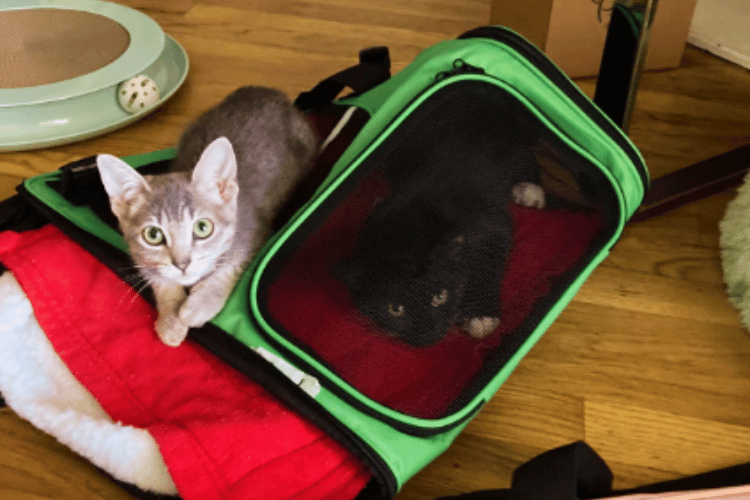
Soft carriers, with their flexible materials, can provide a cozy environment for your cat. They are often equipped with soft padding and can be easier to carry than hard carriers. However, some cats may feel more secure in a hard shell carrier, which can provide a sturdy and protective enclosure.
The Pros and Cons of Carrier Types
When choosing between soft sided carriers and hard sided carriers, consider your cat's size and temperament. Soft carriers can be more comfortable and are usually lighter, making them ideal for short trips or as a tote bag.
They can also be easier to store when not in use. Hard carriers, on the other hand, are more durable and can offer better protection for your cat. They are often the preferred choice for long distances or airplane travel, where they can fit under an airplane seat.
However, soft carriers can easily damage if your cat decides to scratch, and they may not hold up well against a determined kitty. Hard carriers are easier to clean and can be more secure, but they can be bulkier and heavier to transport.
Size Matters: Choosing the Right Carrier
The right size carrier is paramount for your cat's comfort. A carrier should be about one and a half times the size of your cat, providing enough room to move without too much excess space. For kittens, a carrier that's too large can be intimidating, so it's best to start with a size appropriate for their current size and upgrade as they grow.
For large cats or multiple cats, you may need an extra large carrier or separate carriers to ensure each cat has enough space. When transporting two cats, avoid using one big carrier as they may not have enough room to feel secure and could become stressed. The Debate Between Soft and Hard Cat Carriers When it comes to choosing between a soft carrier and a hard carrier for your feline friend, it's essential to weigh the unique benefits of each.
Soft carriers are often favored for their lightweight and pliable nature, making them a breeze to transport and store. They can provide a cozy, less intimidating environment for your cat, which can be particularly soothing for anxious pets. The soft fabric can mimic the comfort of a snug hideaway, which cats naturally seek out when they need a sense of security.
On the other hand, hard-sided carriers offer a sturdy and protective shell that is unmatched by soft carriers. These plastic carriers are easy to clean and disinfect, which is a significant advantage for maintaining hygiene.
They are also more resilient to the sharp claws and teeth of a stressed cat, ensuring longevity and durability. For cats that are escape artists or tend to be more aggressive, a hard carrier can be the safer option to prevent them from breaking free during travel.
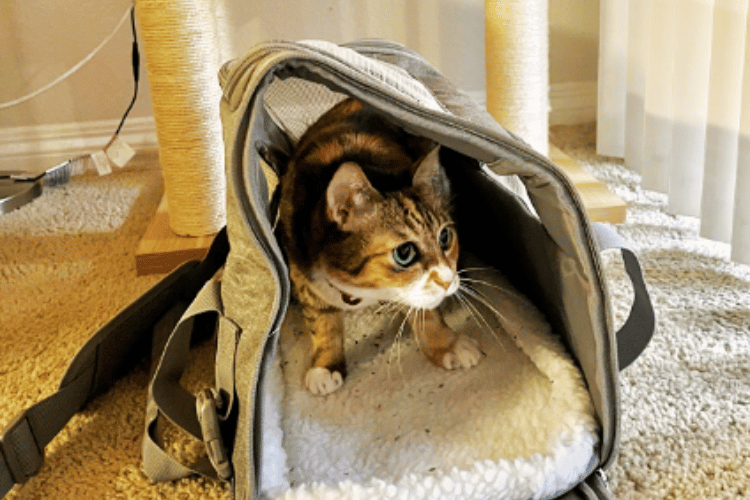
Specialized Cat Carriers for Different Needs For pet owners who travel frequently with their feline companions, a rolling carrier can be a game-changer. These carriers combine the convenience of wheels with the comfort of a regular carrier, making it easier to navigate through airports or city streets.
Rolling carriers are particularly useful for those who have to transport more than one cat or an adult size cat, as they alleviate the strain of carrying a heavy load over long distances.
However, it's important to avoid carriers that don't provide adequate ventilation or security, such as cardboard boxes. While they may seem like a cost-effective solution, they are not designed for repeated use and can easily become compromised, putting your cat at risk during travel.
Instead, investing in a carrier that is specifically designed for cats, whether it's a soft sided carrier for short trips or a hard carrier for more rigorous travel, will ensure your pet's safety and comfort. Always consider the specific needs of your kitten or cat when selecting a carrier, as this will contribute to a more pleasant travel experience for both of you.
The Durability and Safety of Hard-Sided Carriers
When considering a carrier for your feline friend, the durability and safety of a hard-sided carrier cannot be overstated. These carriers, typically made from robust plastics, offer a sturdy structure that can protect your cat during travel.
They are less likely to collapse or bend, ensuring that your pet remains secure. Moreover, the solid walls provide a barrier from external stimuli, which can be particularly beneficial for anxious cats who may feel overwhelmed by their surroundings.
In addition to their strength, hard-sided carriers often come with secure locking mechanisms that prevent accidental openings. This is crucial when traveling in a vehicle or through busy areas where an escape could be dangerous.
The rigid material also makes them easier to clean if your cat has an accident or gets sick. While they may be heavier than soft carriers, their protective benefits often outweigh the inconvenience, making them a popular choice among cat owners.
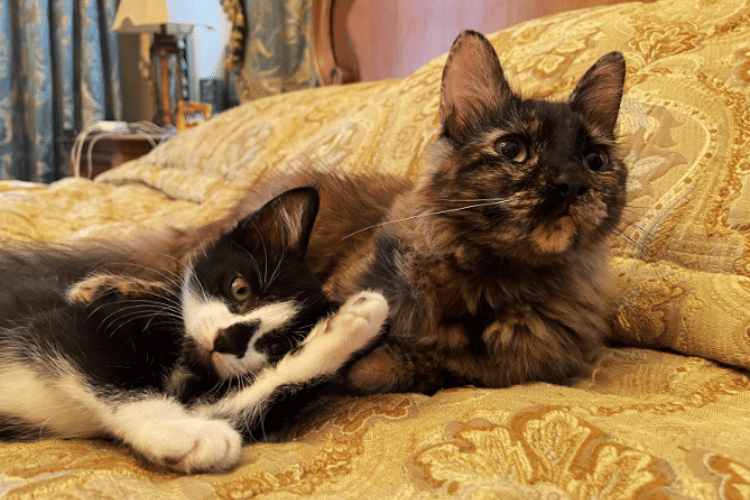
The Versatility of Plastic Carriers
Plastic carriers are a versatile option for cat owners, offering a balance between comfort and functionality. These carriers often feature a variety of door placements, including top and front entry options, which can make placing a reluctant cat inside much easier.
The plastic material also allows for ample ventilation, with numerous holes or slats designed to keep the interior well-aerated. This is essential for maintaining a comfortable temperature and ensuring your cat has enough fresh air, especially during longer trips.
Another advantage of plastic carriers is their range of sizes and styles. They can accommodate cats of all sizes, from the petite to the more robust, ensuring that you can find the perfect fit for your pet. Some models even come with additional features such as compartments for treats or medication, making them ideal for visits to the vet.
With their practical design and ease of use, plastic carriers are an excellent choice for both everyday errands and longer journeys, providing a safe and comfortable environment for your beloved feline.
Features to Look For in a Cat Carrier
A well-designed carrier should have multiple doors for easy access, which can be especially helpful if your cat is resistant to entering the carrier. Look for carriers with seat belt loops for secure transport in a vehicle. Ventilation is also crucial; a well ventilated carrier ensures your cat gets enough air, reducing stress and overheating.
Some carriers come with a removable top, which can be useful for visits to the vet, allowing the cat to be examined while still feeling the security of the bottom of the carrier. Rolling carriers can be convenient for owners, but ensure they have a locking mechanism to keep the carrier stationary when needed.
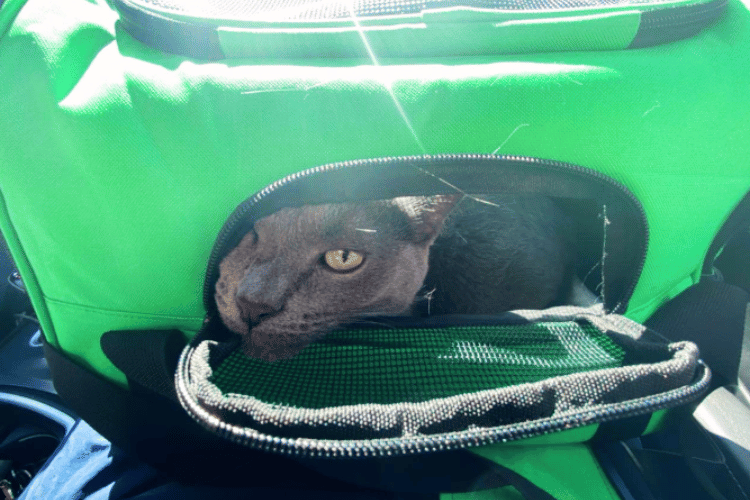
Preparing the Carrier for Comfort
To make the carrier inviting, place a thick towel or a favorite blanket at the bottom of the carrier to provide cushioning and absorb any accidents. Including familiar items like a toy or a piece of clothing with your scent can help your cat feel safe.
For longer trips, consider carriers that can accommodate food and water bowls as well as a small litter box. This will give your cat the amenities they need for comfort during extended travel.
Traveling with Your Cat
When it's time to transport your kitty, whether to the vet or on a longer journey, ensure the carrier is secure in the vehicle. Use seat belt loops to fasten the carrier to the car seat, which helps to minimize movement and provide a smoother ride for your cat.
For air travel, check with the airline for their specific pet travel requirements. Carriers that fit under an airplane seat are typically required for in-cabin travel. Hard carriers are often necessary for cargo hold travel, and they must meet the same standards as those for dogs.
Training Your Cat to Use the Carrier
Training your cat to associate the carrier with positive experiences can make travel less stressful for both of you. Leave the carrier out in your home with the door open to allow your cat to explore it at their leisure. Occasionally place treats or cat food inside to encourage your cat to enter and spend time inside.
If your cat is hesitant, start by placing them in the carrier for short periods and gradually increase the time. Always remain calm and patient, as cats can pick up on your emotions and become anxious if you are.
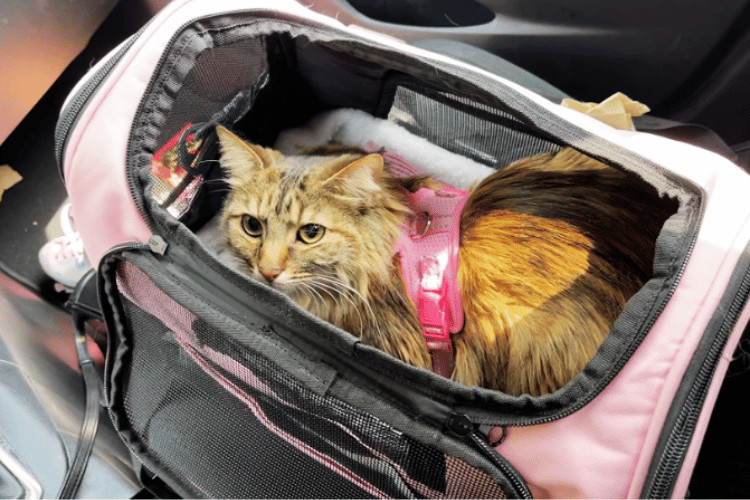
Summary
Choosing the right carrier for your cat is a balance between size, comfort, and security. While some cats may prefer the snugness of a small carrier, others may need more room to feel comfortable. Soft carriers offer flexibility and comfort, while hard carriers provide durability and protection.
The best carrier for your cat will depend on their individual needs and the type of travel you'll be doing. Remember to consider features like multiple doors, seat belt loops, and proper ventilation when selecting a carrier. With the right preparation and a suitable carrier, you can ensure that your cat's travel experiences are as stress-free as possible.
FAQ Section
How do I know if my cat prefers a small or large carrier?
Observe your cat's behavior. If they tend to hide in small, enclosed spaces, they may prefer a smaller carrier. However, the carrier should still be large enough for them to stand, turn around, and lie down comfortably. If your cat likes more open spaces, they may be more comfortable in a slightly larger carrier.
Can I transport two cats in one carrier?
It's generally not recommended to transport two adult cats in one carrier, as they may not have enough space to feel secure and could become stressed. It's better to use separate carriers or an extra large carrier with a divider if necessary.
Should I put food and water in the carrier for a trip to the vet?
For short trips like a visit to the vet, it's not usually necessary to include food and water bowls in the carrier. However, for longer trips, having access to water, in particular, is important. Always ensure that your cat has had a chance to eat and drink before a longer journey.
Thank you for visiting LegitLists we hope this helps you make a legitimate choice!






